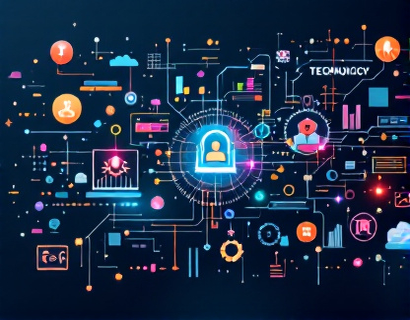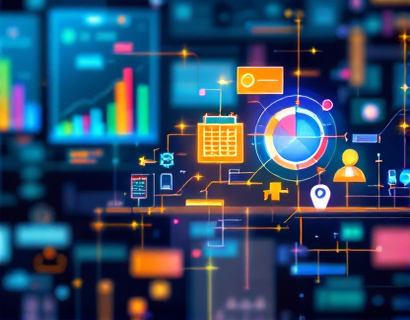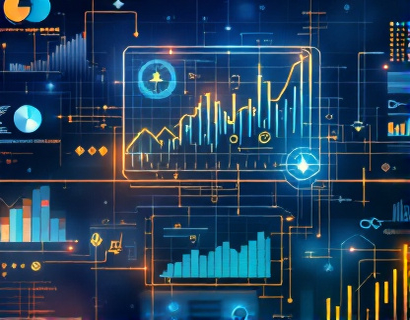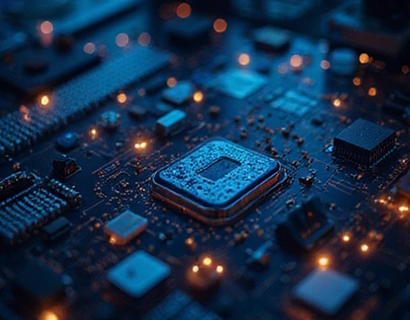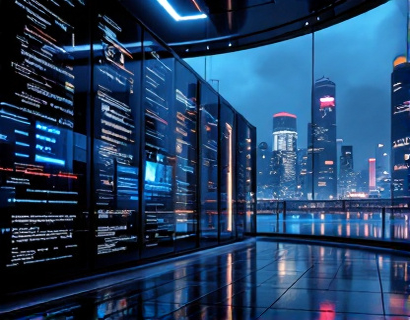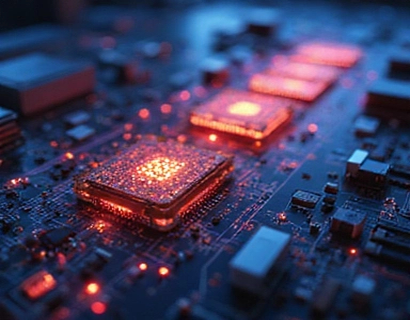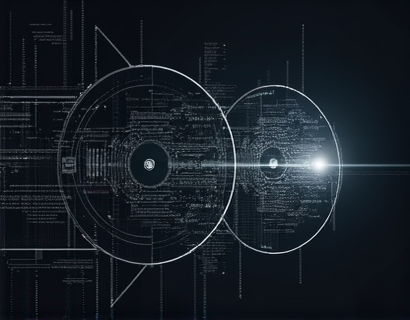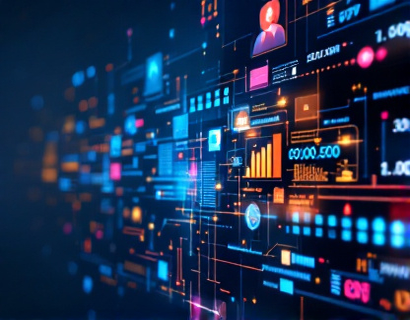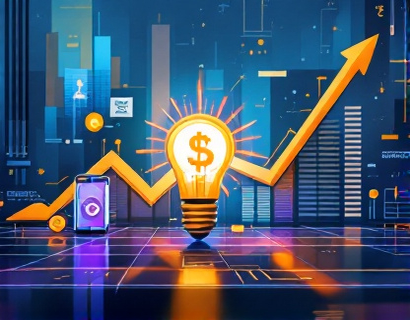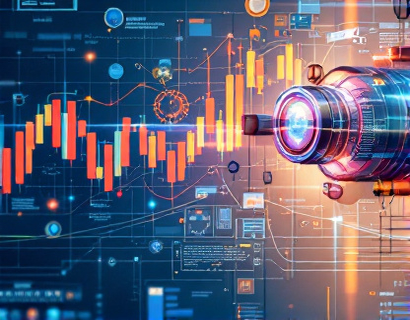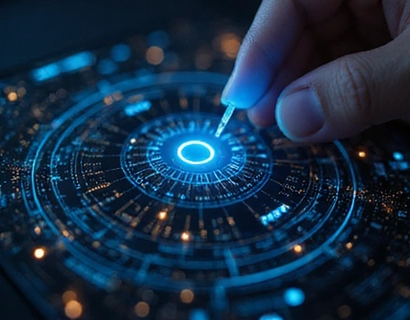Decentralized Excellence: Unleashing the Power of AI and Crypto for Next-Gen Digital Solutions
The intersection of cryptocurrency and artificial intelligence (AI) is giving birth to a new era of digital innovation, one that promises to redefine how we interact with technology and each other. This convergence is not just a technological advancement but a paradigm shift, offering decentralized solutions that enhance user engagement and create more resilient, transparent, and efficient systems. For tech enthusiasts, early adopters, and digital innovators, understanding this synergy is crucial for navigating the future of digital experiences.
Understanding Decentralization and Its Impact
Decentralization, at its core, is about distributing control and decision-making across a network rather than centralizing it in a single entity. This approach has profound implications for digital solutions, as it reduces the risk of single points of failure, enhances security, and promotes greater transparency. In the context of AI and cryptocurrency, decentralization enables the creation of systems where data and computations are managed collectively, without the need for intermediaries.
The impact of decentralization is multifaceted. It fosters a more democratic digital environment where users have greater control over their data and interactions. This shift empowers individuals, reduces dependency on centralized platforms, and opens up new opportunities for innovation. For instance, decentralized finance (DeFi) platforms allow users to access financial services without traditional banking infrastructure, while decentralized autonomous organizations (DAOs) enable community-driven governance and decision-making.
AI: The Catalyst for Intelligent Decentralized Systems
Artificial intelligence, with its ability to process vast amounts of data and learn from patterns, is the driving force behind the intelligence of decentralized systems. AI algorithms can optimize network operations, enhance security measures, and personalize user experiences in ways that were previously unimaginable. When combined with the decentralized architecture, AI can operate more efficiently and effectively, leading to breakthroughs in various domains.
One of the key applications of AI in decentralized systems is in data analysis and decision-making. Decentralized networks generate enormous amounts of data, and AI can process this data in real-time to provide insights and automate processes. For example, AI-driven predictive analytics can help in identifying trends, forecasting market movements, and optimizing resource allocation within a decentralized network.
Decentralized Applications (DApps): The Future of User Engagement
Decentralized applications, or DApps, are at the forefront of this technological revolution. Unlike traditional web applications, DApps run on a blockchain network, ensuring transparency, security, and user control. These applications leverage AI to enhance functionality and user experience, creating a more engaging and interactive digital environment.
DApps can range from social media platforms that reward users with cryptocurrency for content creation and engagement, to decentralized marketplaces that facilitate peer-to-peer transactions without intermediaries. The integration of AI in DApps allows for personalized recommendations, intelligent matching systems, and automated customer support, all while maintaining the decentralized ethos.
Case Study: Decentralized Social Media Platforms
Consider a decentralized social media platform that uses AI to curate content based on user preferences and engagement patterns. This platform allows users to own their data, with blockchain ensuring that their information is secure and they retain control over who accesses it. AI algorithms analyze user interactions to recommend relevant posts and connect users with similar interests, fostering a more meaningful and engaging community.
Moreover, such platforms can implement AI-driven moderation tools to detect and mitigate harmful content, ensuring a safe and respectful environment for all users. The decentralized nature of these platforms means that no single entity has control over the content or the community, promoting a more democratic and inclusive digital space.
Enhancing Security and Trust through Blockchain and AI
Security and trust are paramount in the digital age, and the combination of blockchain and AI offers robust solutions to these challenges. Blockchain's immutable ledger ensures that transactions and data are tamper-proof, while AI can detect and respond to potential security threats in real-time.
AI-powered security systems can monitor network activity, identify anomalies, and trigger alerts or automated responses to mitigate risks. For instance, machine learning algorithms can be trained to recognize patterns indicative of cyberattacks, such as unusual data access or transaction activities, allowing for proactive defense mechanisms.
Additionally, AI can enhance the user authentication process in decentralized systems. Biometric data, such as facial recognition or voice patterns, can be integrated with blockchain to create secure and seamless login experiences. This not only improves security but also enhances user convenience, as users no longer need to remember complex passwords.
Optimizing Performance and Scalability with AI
One of the significant challenges in decentralized systems is scalability. As the number of users and transactions grows, ensuring that the network remains efficient and responsive is crucial. AI plays a vital role in optimizing the performance of decentralized networks by dynamically adjusting resources and processes based on real-time data.
AI can manage network congestion by predicting peak usage times and allocating resources accordingly. It can also optimize smart contract execution, ensuring that transactions are processed swiftly and efficiently. By leveraging AI, decentralized networks can scale seamlessly, maintaining high performance even as demand increases.
Energy Efficiency: A Sustainable Approach
Energy consumption is another critical aspect of decentralized networks, particularly those that rely on proof-of-work consensus mechanisms. AI can contribute to more energy-efficient operations by optimizing the computational resources used in mining or validating transactions. Machine learning algorithms can identify the most efficient mining strategies and adjust parameters to minimize energy usage without compromising security or performance.
Furthermore, the integration of renewable energy sources can be optimized using AI, ensuring that decentralized networks operate in an environmentally sustainable manner. This aligns with the growing demand for green technology and helps reduce the carbon footprint of digital solutions.
Personalization and User Experience: The AI Advantage
AI-driven personalization is a game-changer for user experience in decentralized applications. By analyzing user behavior and preferences, AI can tailor the interface, content, and functionalities to individual needs, creating a more intuitive and satisfying experience.
For example, in a decentralized e-commerce platform, AI can recommend products based on past purchases and browsing history, enhancing the shopping experience and increasing user engagement. Similarly, in decentralized gaming platforms, AI can adapt game difficulty and content to match the player's skill level, ensuring an enjoyable and challenging experience.
Voice and Natural Language Processing
AI's advancements in voice recognition and natural language processing (NLP) are particularly beneficial for decentralized applications. Users can interact with DApps using voice commands or natural language queries, making the technology more accessible and user-friendly. This is especially valuable for individuals who may not be tech-savvy or for those using devices with limited input options.
AI-powered chatbots and virtual assistants can also provide 24/7 customer support, answering queries, and guiding users through the platform's features. These AI-driven interfaces not only enhance user experience but also reduce the workload on human support teams, making the service more efficient and cost-effective.
Challenges and Considerations
While the potential of decentralized AI solutions is immense, there are several challenges and considerations that must be addressed. One of the primary concerns is the technical complexity involved in building and maintaining decentralized systems. Developers need a deep understanding of both blockchain technology and AI to create robust and secure applications.
Another challenge is the regulatory landscape. As decentralized technologies operate outside traditional legal frameworks, navigating compliance and governance can be complex. Ensuring that these systems adhere to data protection laws, anti-money laundering regulations, and other legal requirements is essential for their widespread adoption.
Interoperability is also a significant issue. For decentralized applications to thrive, they need to seamlessly integrate with other blockchain networks and traditional systems. AI can play a role here by developing standards and protocols that facilitate interoperability, but this requires collaboration and standardization efforts across the industry.
The Future of Decentralized AI Solutions
The convergence of AI and decentralization is just beginning, and the future holds immense potential. As technology continues to evolve, we can expect more sophisticated and user-friendly decentralized applications that leverage AI to enhance functionality and user experience. The integration of edge computing, quantum AI, and advanced cryptographic techniques will further push the boundaries of what is possible.
Moreover, the adoption of decentralized AI solutions can lead to more equitable access to technology, empowering individuals and communities worldwide. By reducing reliance on centralized entities, these solutions can bridge the digital divide and foster a more inclusive digital landscape.
In conclusion, the synergy between AI and decentralization is revolutionizing the digital world, offering innovative solutions that enhance security, transparency, and user engagement. For those interested in the future of technology, understanding and embracing this convergence is essential for staying ahead in the rapidly evolving digital landscape.







